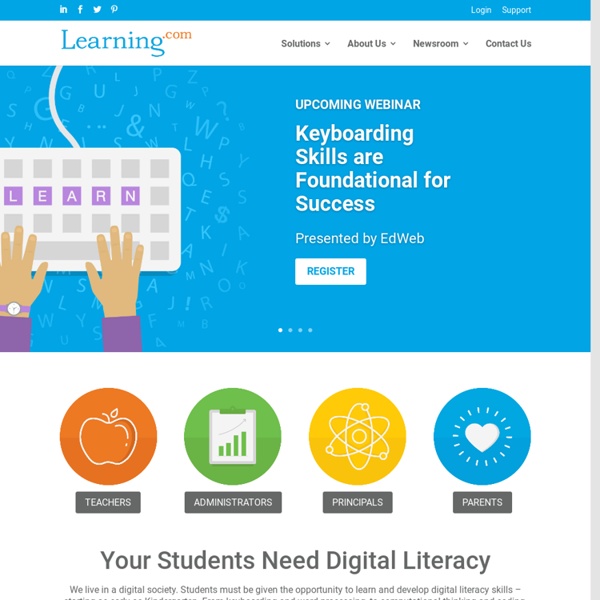



'How Coaching Works' - The Art of Coaching Teachers UserID: iCustID: IsLogged: false Learning Software Hosted in Cloud The sky’s the limit for teaching and learning possibilities Create, customise and control your learning environment with the world’s number one learning platform, hosted in the cloud. Get your MoodleCloud site now. 8 Classroom Management Tips by Jennifer Rita Nichols, TeachThought Intern One of the biggest struggles facing new teachers is figuring out how to effectively manage a classroom. This is very different from teaching–make no mistake about it! Most of us learn how to teach in our teacher education programs. We learn about the curriculum and standards that must be followed. We also learn about fun and interesting activities for different subjects and how to plan cross-curricular units to make the most out of the time we have in class.
Professional Development for Educators What is the Arizona Technology Integration Matrix? The Technology Integration Matrix (TIM) illustrates how teachers can use technology to enhance learning for K-12 students. The TIM incorporates five interdependent characteristics of meaningful learning environments: active, collaborative, constructive, authentic, and goal directed (Jonassen, Howland, Moore, & Marra, 2003). PDK Washington State Chapter #1599 PDK Journal: Washington State Kappan Our quality Washington State Kappan journal will be published two times per year with the first publication this fall. This is a quality peer-reviewed journal. We encourage you to read it and submit articles.
WEBSITE-CONTENTS Website contents are organized by book chapter. 1. Orientation to Online Teaching and Learning 2. DIY Professional Development: Resource Roundup Taking Charge: 5 Key Strategies for DIY PD, by Michelle Manno (2015) Educators can create their own professional development opportunities with the many resources available via social media, and by bringing their admins on board with this new model, writes Manno. DIY Virtual Professional Development: Taking Ownership of Your Learning, by Monica Burns (2015) Burns suggests seven online strategies to help teachers take ownership of their professional development, including sane ways to embrace the information-rich Twitter experience, Google Hangouts, and video tutorials. 8 Tips to Create a Twitter-Driven School Culture, by Elana Leoni (2014) Edutopia's director of social media strategy and marketing provides tips that administrators can use to create a more connected school culture by modeling Twitter use and encouraging staff to work, play, and learn through the medium. Another great post from Leoni: 5 Tips for Taking Advantage of Twitter Over the Summer.
School Matters - Information for Teachers This site has been designed for use as a cross-curricular ICT tool for Key Stages 1, 2 and 3. Through a series of fun, interactive games and activities, children will learn about different food-related issues: food safety, diet and nutrition, farm to fork and food technology. Activities can be used on individual PCs or interactive whiteboard in a variety of lessons, including science, geography, PSHE and citizenship and design technology. There are also a number of tried-and-tested lesson plans, as well as activity sheets, ideal for homework or extension work. The site content is based around the Food Standards Agency recommended key stage competencies and all content is checked for accuracy by both the FSA and an independent educational consultant.
The Quality Assurance Agency for Higher Education (QAA) Skip to main navigation Skip to content Accessibility | Text size: A A A | Display: Default / High contrast | Text only Newsroom FAQs Contact us Vacancies Ptlls assignments All the Ptlls assignments are listed with a link to a more detailed discussion of each. The theory part is your essays. All the essay questions for both levels are covered in much greater detail on their own page, just click on the link. The practical section is your scheme of work, session plan, microteach, reflective journal and all that jazz. The assignments separated in to two sections: the level three and the level four.